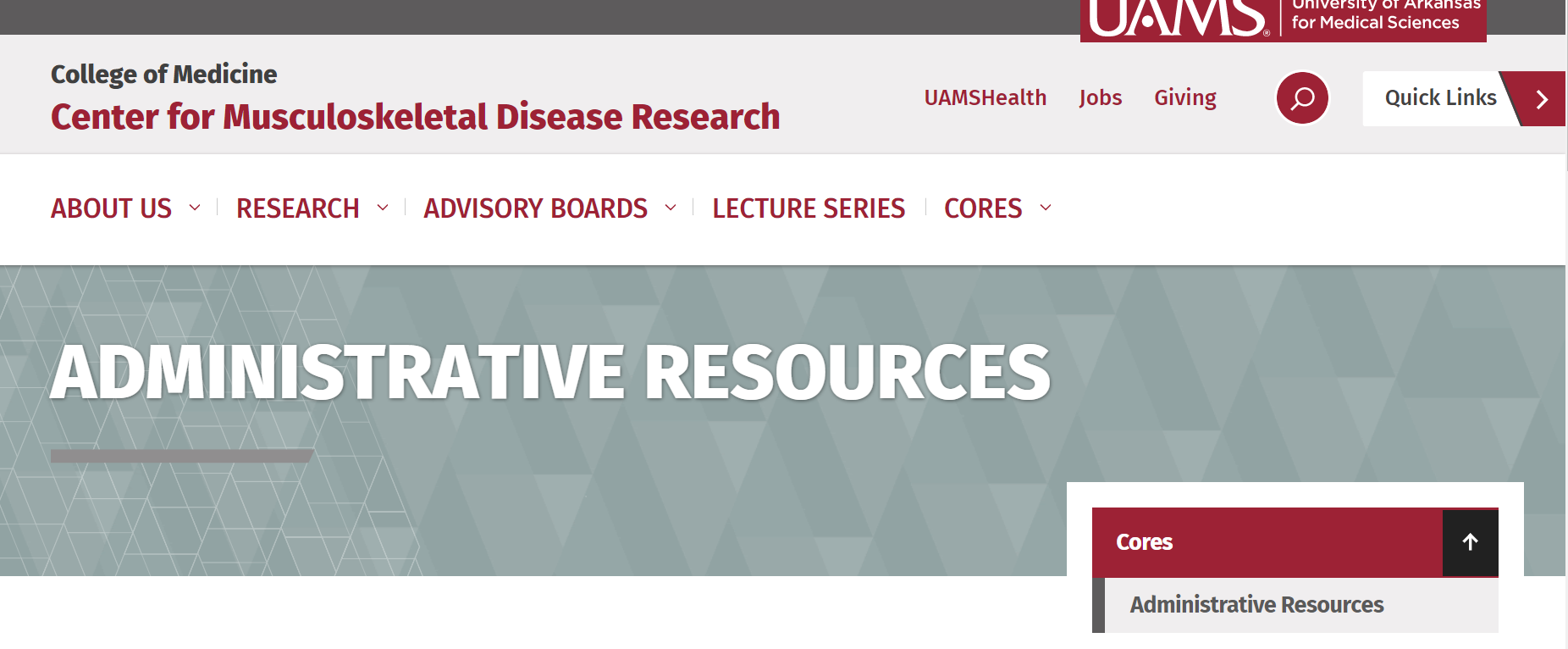Conditions such as osteoporosis, osteoarthritis, developmental abnormalities of the skeleton, as well as malignancies, such as multiple myeloma and breast cancer metastases, all negatively affect the musculoskeletal system. These conditions affect the health of a sizable percentage of the US population and lead to significant disability and substantial health care costs, and there is an ongoing need to better understand their causes and to support the development of more effective and well-tolerated therapies. To address this need, we propose to establish and develop a thematic and multidisciplinary Center for Musculoskeletal Disease Research (CMDR) at the University of Arkansas for Medical Sciences (UAMS). The scientific theme of the CMDR is that molecular and genetic analysis of musculoskeletal diseases, and conditions that involve the skeleton as part of their disease process will lead to a better understanding of their causes and will support the development of novel therapies. Our approach to studying these conditions will take advantage of state-of-the-art approaches to analyze the genome and transcriptome, the genetic manipulation of cells and animals, and skeletal phenotyping. A key to the success of this approach will be to increase the number of investigators whose research is aligned with the scientific theme of the Center via the development of junior investigators and recruitment of new and established investigators. We will establish the CMDR on a strong foundation of musculoskeletal research and implement an Organization and Management Plan to create a self-sustaining Center of Biomedical Research Excellence (Aim 1). We will also provide multidisciplinary development and unique research opportunities to young investigators and support them to the point of independence (Aim 2). Lastly, we will create diverse teams of productive investigators by providing access to effective and useful research cores that produce significant and long-lasting benefits to the research infrastructure of UAMS and its affiliated institutions (Aim 3). The Overall Center Organization and Management Plan includes the Administrative Core, three research cores, and four research projects, led by promising junior investigators. The Administrative Core will oversee the establishment and operation of the center, the three research cores, and a faculty development plan. The integrated and interactive faculty development plan will include a formal mentoring program that will guide four junior investigators to independence. The CMDR research cores include a Genetic Models Core that will use cutting-edge approaches to genetically manipulate cells and mice, a Bone Histology and Imaging Core that will analyze mouse and human hard tissues, and a Bioinformatics Core that will analyze the large datasets generated by the molecular analyses of cells from mouse and human samples. Successful implementation of this Organization and Management Plan will in the long-term lead to a self-sustaining Center of Biomedical Research Excellence that will generate novel and important results leading to more effective therapies for a variety of conditions that involve the musculoskeletal system. Conditions such as osteoporosis, osteoarthritis, developmental abnormalities, osteomyelitis, and malignancies, such as multiple myeloma and breast cancer negatively affect the skeleton. There is an ongoing need to better understand the causes of these diseases to support the development of more effective and well-tolerated therapies. Comprehensive analyses of the molecular changes that contribute to these conditions may lead to the development of such therapies.

